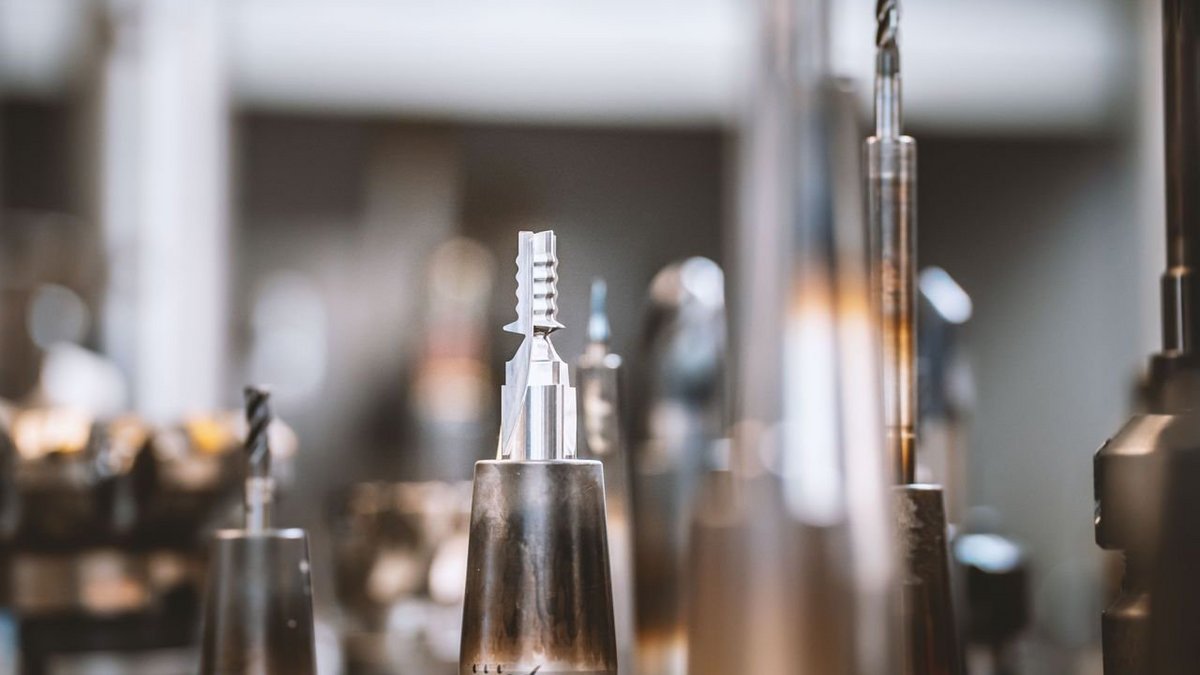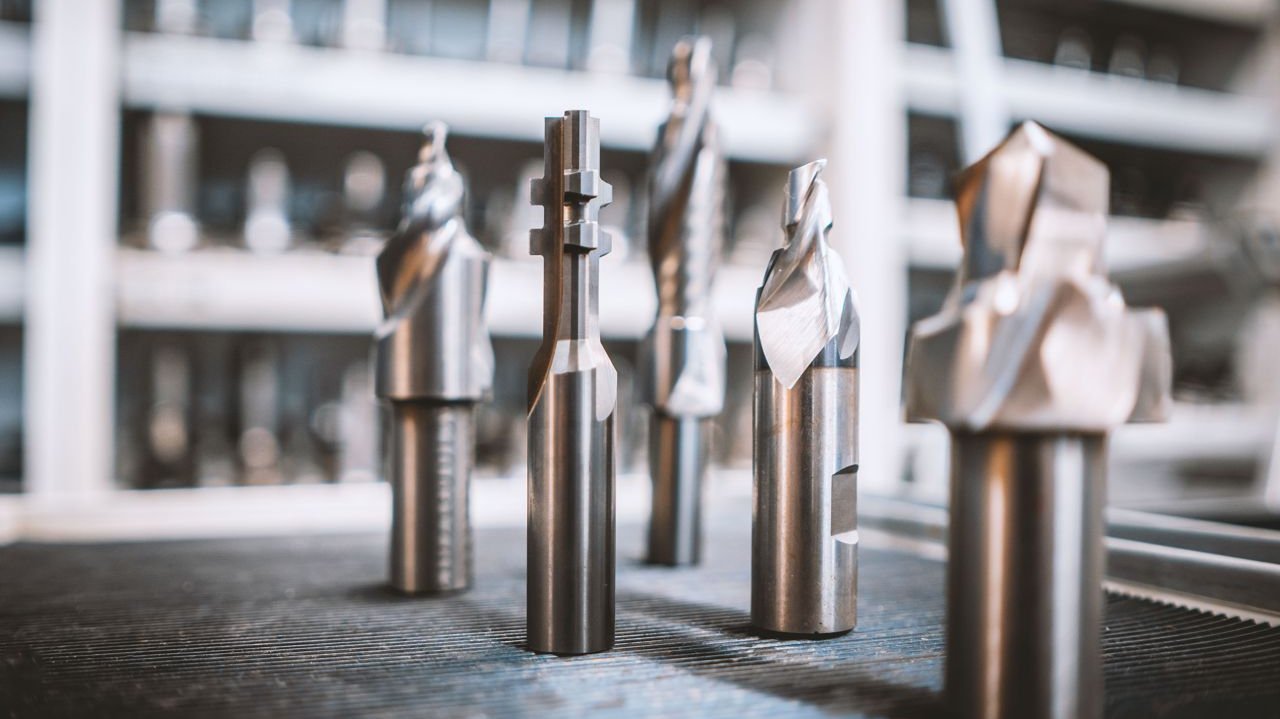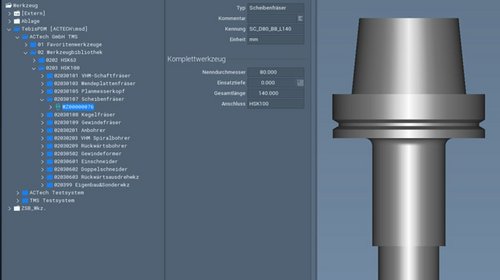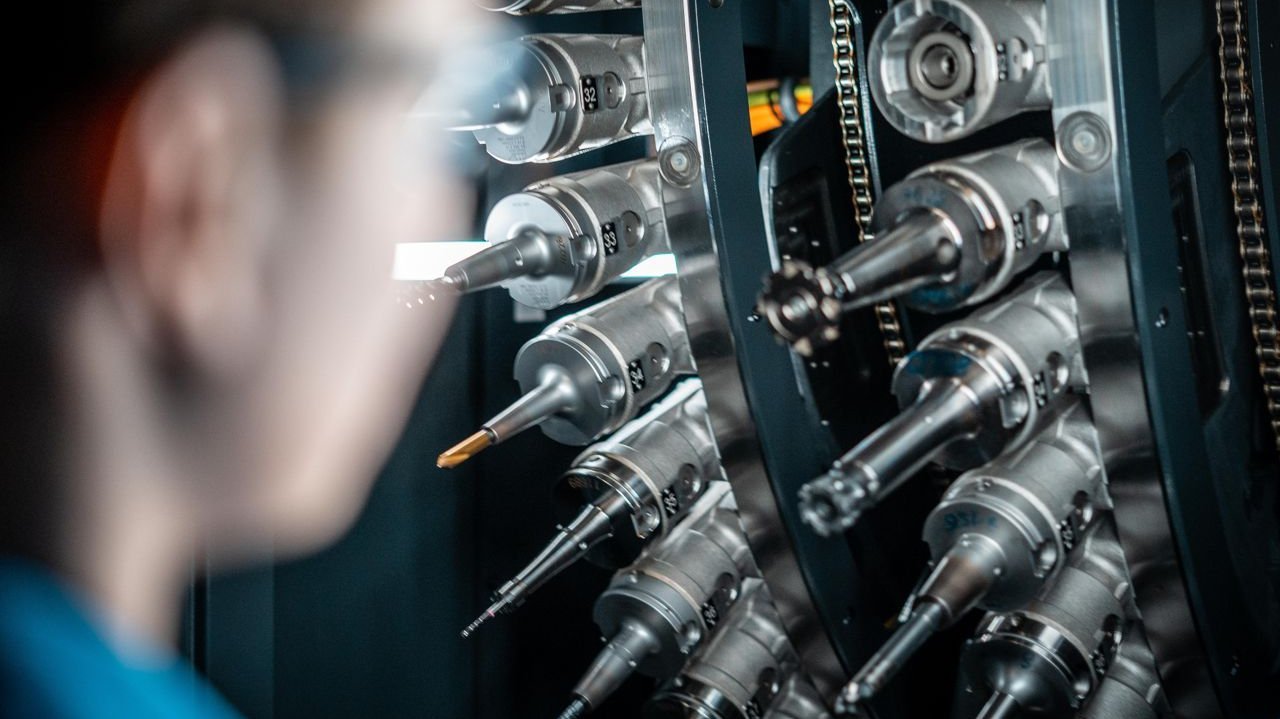Externer Inhalt von ##teaserTitle##
##teaserText##

We’ve all heard stories of needles in haystacks. Chances are, many of us are familiar with a mystical drawer somewhere in the house filled with forgotten odds and ends, or a toolbox, perhaps, full of loose screws and drill bits. For the laypeople among us, such organizational skills — or lack thereof — will likely lead to little more than a minor inconvenience. For a manufacturer the size of ACTech, however, it would lead to unmitigated disaster, particularly with the short deadlines and high investment costs associated with prototype casting.
To truly understand just how crucial organization is on the foundry floor, it’s important to begin with a bit of context. CNC machining is the final piece of the process for almost every project. Every project requires anything from 55 to 215 individual tools. If the wrong tool is used, the part is likely ruined, and the entire project needs to start again. With 18 machines on the go at any given time, around 10,000 tools to choose from, and incredibly tight deadlines to meet, there’s no room for error.
Naturally, the ACTech team has left nothing to chance. Over the years, we have optimized the machining process and developed a high-tech tool management system to ensure every project runs smoothly. Here’s a quick breakdown of how we did it.
Lean management and the 5S system
Made famous by Toyota several decades ago, the concept of lean management has helped transform manufacturing departments in all sorts of industries. Since 2017, we’ve made sure to bring the practice into our own work, beginning with the 5S system - Sort out, Straighten Up, Shine, Standardize, and Sustain. In essence, keep the place tidy, organized, and in logical order - and most importantly, take lessons from what we found in the process. Adopting the 5S system definitely helped us do that. We identified waste in seven key areas ranging from transport and motion to inventory and overproduction and set about trying to reduce it.

For the most part, this meant making minor changes to procedures, while others, such as our tool management, were much broader - beginning with the workflow in our 180 m2 storage room. With cabinets and drawers lined up wall to wall and machine operators running in and out, all while trying to find the parts they needed as quickly as possible, the potential for chaos was never far away. By integrating a simple one-way system - not too dissimilar to what you might find in the labyrinth of IKEA - we ensured that any foot traffic went from spaghetti to smooth in an instant.
Finding the tools for the job
But while helping our team navigate the tool department definitely improved things, it wouldn’t mean much without a system that let them know what they were looking for and where to find it. Originally, this was done through our Tool of Tools, a software program we put together ourselves. It provided everything we needed to an extent - the master data, our inventory, and the sets that each tool belonged to - with every tool tracked via a scannable code lasered onto its surface. But as our collection grew, so too did our need for something different. By investing in tool management software from Zoller and an interface to CAM software from Tebis in 2019, we integrated an essential combination that manages our €11 million worth of assets easily and efficiently.


Each piece of software brings unique benefits. Through Tebis, we can prepare the various machining steps in our CNC program according to each customer’s requirements. A connection to the Zoller tool database provides possible tool combinations based on information such as the length, diameter, and other relevant parameters of each tool. This step is particularly important - pick the wrong blend, and the part could be ruined. With Zoller’s tool management system, the team can see exactly where everything is stored, book the parts they need, and order new pieces if necessary.
A solution without compromise
Together, this software has the added benefit of making sure everyone is on the same page by providing a complete overview that can be consulted at every point of the project. The CNC programming, for example, is set up while the casting is still in progress. This enables us to identify which parts we need for each project and where and when we need them. Doing so avoids duplication in the purchasing department and helps avoid mistakes by ensuring every team member measures their tools in the same way. With every assembled piece passing through simulation and design before it is actually machined, such cross-function uniformity matters.

Overall, our tool management system does more than speed up the process of finding parts and keeping everything organized. It’s crucial in ensuring that we keep our promises — finishing every project on time to the highest possible quality. Through this combination of software, we can identify and order the perfect tool for every job whenever availability is an issue. Over the years, we’ve put together a stock list that includes milling and drilling tools from Ceratizit, Sandvik, and Ingersoll, and boring drills from BIG DAISHOWA, just to name a few. But we’re never against purchasing more or even making our own if the situation calls for it — indeed, we wouldn’t be surprised if our 10,000 tools become 100,000 in the not-so-distant future. After all, when you go all-in with ACTech, you can rest assured that whatever you need, we’ll get it for you.
Would you like to learn more about prototype casting or ask for more information about starting a project with ACTech? We'd love to have a conversation.
Contact us
Diese Website nutzt Cookies, um das beste Nutzererlebnis zu gewährleisten, um die Nutzung der Website zu analysieren und Datenschutzeinstellungen zu speichern. In unseren Datenschutzrichtlinien können Sie Ihre Auswahl jederzeit ändern.
Funktionale
Diese Cookies gewährleisten das korrekte Betreiben der Seite. Auch zustimmungsfreie Cookies oder First Party Cookies genannt.
Anbieter, die Cookies auf dieser Seite nutzen, werden nachfolgend aufgelistet. Wo dies möglich ist, können Sie der Nutzung von Cookies zustimmen.
Cookies, welche für die Grundfunktion unserer Seite benötigt und gesetzt werden.
Cookies, welche für die Nutzung des TYPO3 Backendzugangs benötigt und gesetzt werden.
Analytische Cookies
Diese Cookies sammeln anonyme Informationen über die Nutzungsweise einer Website, bspw. wie viele Besucher welche Seiten aufrufen. Damit soll die Performance der Website und das Nutzererlebnis verbessert werden.
Anbieter, die Cookies auf dieser Seite nutzen, werden nachfolgend aufgelistet. Wo dies möglich ist, können Sie der Nutzung von Cookies zustimmen.
Cookie von Google für Website-Analysen. Erzeugt statistische Daten darüber, wie der Besucher die Website nutzt.
Marketing
Marketing-Cookies werden verwendet, um Besuchern auf Webseiten zu folgen. Die Absicht ist, Anzeigen zu zeigen, die relevant und ansprechend für den einzelnen Benutzer sind und daher wertvoller für Publisher und werbetreibende Drittparteien sind.
Anbieter, die Cookies auf dieser Seite nutzen, werden nachfolgend aufgelistet. Wo dies möglich ist, können Sie der Nutzung von Cookies zustimmen.
Der Google Tag Manager verwaltet die JavaScript- und HTML-Tags die für die Verwendung von Tracking- und Analysetools benötigt werden. Der Google Tag Manager setzt selber keine Cookies.
Cookie von Meta Pixel für Website-Analysen. Erzeugt statistische Daten darüber, wie der Besucher die Website nutzt.
Werbeanzeigen auf anderen Websites gezielter anzuzeigen, um Nutzern nur Anzeigen zu präsentieren, die potentiell deren Interessen entsprechen.
Streaming-Dienste
Unsere Internetseite kann Elemente aus externen Quellen enthalten. Es wird darauf hingewiesen, dass wir keinen Einfluss darauf haben, dass Betreiber anderer Webseiten die geltenden Datenschutzbestimmungen einhalten. Weitere Informationen zu den einzelnen Anbietern finden Sie unter den detaillierten Informationen.
Anbieter, die Cookies auf dieser Seite nutzen, werden nachfolgend aufgelistet. Wo dies möglich ist, können Sie der Nutzung von Cookies zustimmen.